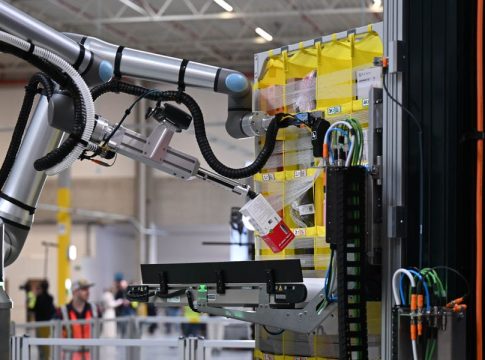The Future of U.S. Manufacturing: How AI and Robotics Are Leading a Revolution
The U.S. manufacturing landscape is undergoing a significant transformation, driven largely by advancements in artificial intelligence (AI) and robotics. While we have seen a steady decline in the sector over recent years, the integration of these cutting-edge technologies may provide the much-needed catalyst for revitalization.
A Declining Sector
Manufacturing in the United States has faced several challenges, notably heightened competition from international markets, particularly China. Despite tariff policies implemented during Donald Trump’s administration aimed at protecting domestic production, experts argue that these measures alone fall short. Tariffs might provide a temporary boost, but they cannot address the fundamental issue: the stark cost advantages offered by offshore production.
Goldman Sachs analysts have pointed out that to truly reverse the stagnation plaguing U.S. manufacturing productivity, a technological overhaul is essential. While tariffs attempt to shield local jobs, they do not eliminate the cost efficiencies that industries in countries like China enjoy through robust governmental support and lower wage structures.
The Role of AI and Robotics
So how can AI and robotics tilt the scales? Companies across sectors are already harnessing these technologies to streamline operations and elevate productivity. For instance:
- Amazon has deployed robots in its fulfillment centers to handle repetitive tasks, which enhances efficiency and reduces operational costs.
- PepsiCo leverages AI to optimize agricultural practices, ultimately boosting profit margins and supporting sustainability efforts.
- Tetra Pak, a leader in food packaging, uses AI algorithms to devise optimal recipes that comply with regulatory standards, ensuring both creativity and compliance.
These examples illustrate a growing trend: AI is not just a tool for cost-cutting; it’s a vehicle for innovation.
Predictive Maintenance and Beyond
One of the most fascinating applications of AI in manufacturing is predictive maintenance. By analyzing historical data, AI systems can forecast potential machinery failures, allowing businesses to take preventive measures and avoid costly downtimes. This capability not only conserves resources but also enhances overall reliability and safety in manufacturing environments.
However, as companies adopt these advanced technologies, there is a notable downside: job displacement. Roles traditionally filled by human workers are being increasingly automated, leading to a restructured workforce. This transition highlights the dual-edged nature of technological advancement—while productivity benefits society, it raises questions about job security for many workers.
Looking Ahead
The push towards automation through AI and robotics signals a pivotal shift in U.S. manufacturing. The sector’s revival might not lie solely in protecting existing jobs through tariffs, but rather in embracing technological innovation that can empower a more efficient and competitive industry.
In conclusion, as we witness AI’s rapid integration across manufacturing processes, it’s crucial for policymakers, businesses, and workers to collaborate in shaping a future that balances efficiency with workforce sustainability. Embracing innovation could redefine what American manufacturing looks like in the decades to come—transforming challenges into opportunities.

Writes about personal finance, side hustles, gadgets, and tech innovation.
Bio: Priya specializes in making complex financial and tech topics easy to digest, with experience in fintech and consumer reviews.

